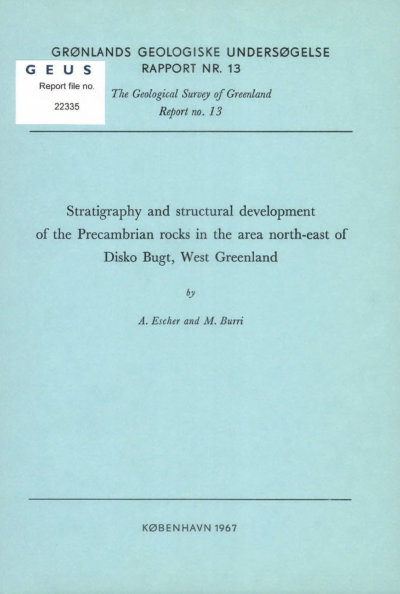Stratigraphy and structural development of the Precambrian rocks in the area north-east of Disko Bugt, West Greenland
DOI:
https://doi.org/10.34194/rapggu.v13.7161Abstract
The Precambrian rocks in the area north-east of Disko Bugt can be divided into a lower gneiss group and an upper supracrustal group. The lower part of the supracrustal group consists of quartzites, amphibolites and garnet-staurolite schists, while the upper part is mainly semipelitic schist. The gneisses were affected by three successive phases of deformation, while in the supracrustals only the two latest phases of folding can be recognized. Evidence is given in support of the idea that the supracrustals were deposited on a gneiss basement after the first phase of folding, the basement being later reactivated mainly during the third and last deformation. Two main tectonic compLexes can be distinguished in the area mapped: a southern complex characterized by a predominarit ENE direction of the fold axes and a northern complex in which the main fold axes are strongly curved around a central gneiss dorne. The transition zone between the southern and northern complex is marked by the presence of severaL important faults and mylonites. The gneiss dorne is flanked in its northern part by a thick granite sheet. The dorne structure appears to have been forrned by a combination of diapiric movements and the interference between two successive deformations. The gneisses and lower supracrustals recrystallized under amphibolite facies conditions, while greenschist facies conditions prevaiLed during the recrystallisation of the upper supracrustals.
Downloads
Published
Issue
Section
License
This article is distributed under a CC-BY 4.0 licence, permitting free redistribution and reproduction for any purpose, even commercial, provided proper citation of the original work. Author(s) retain copyright over the article contents.


